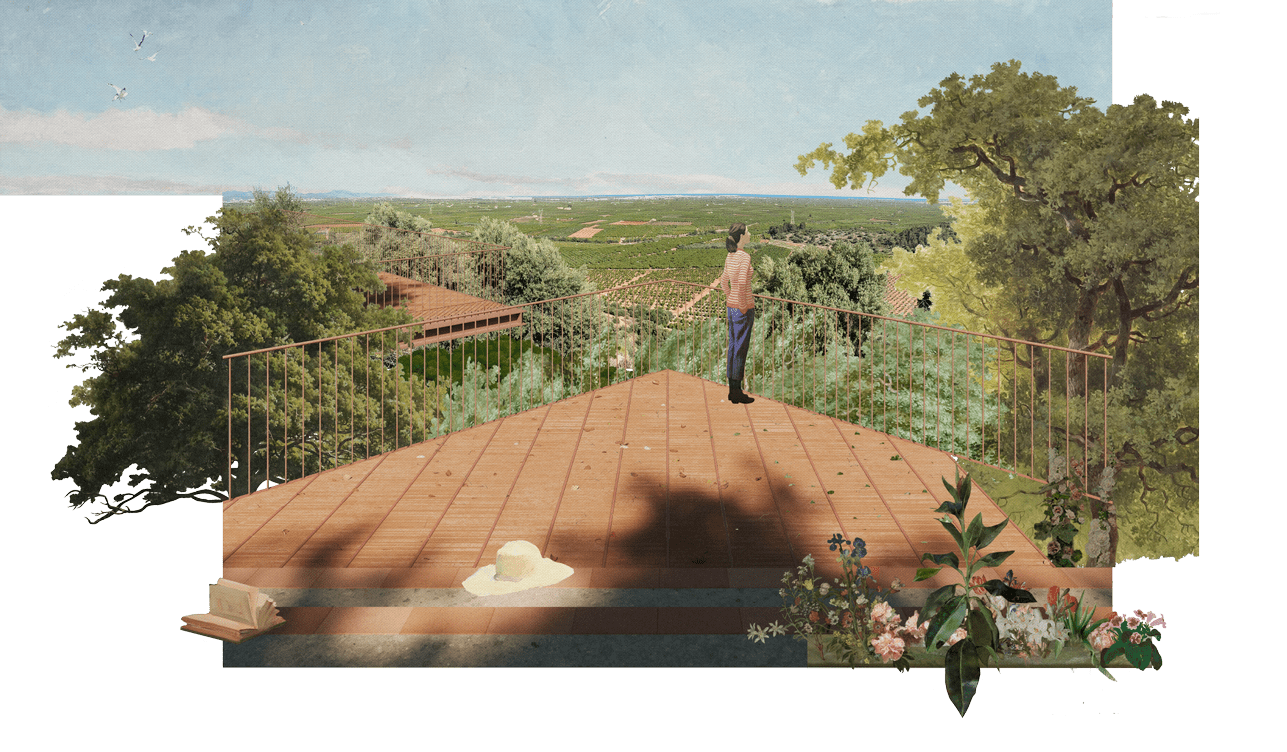
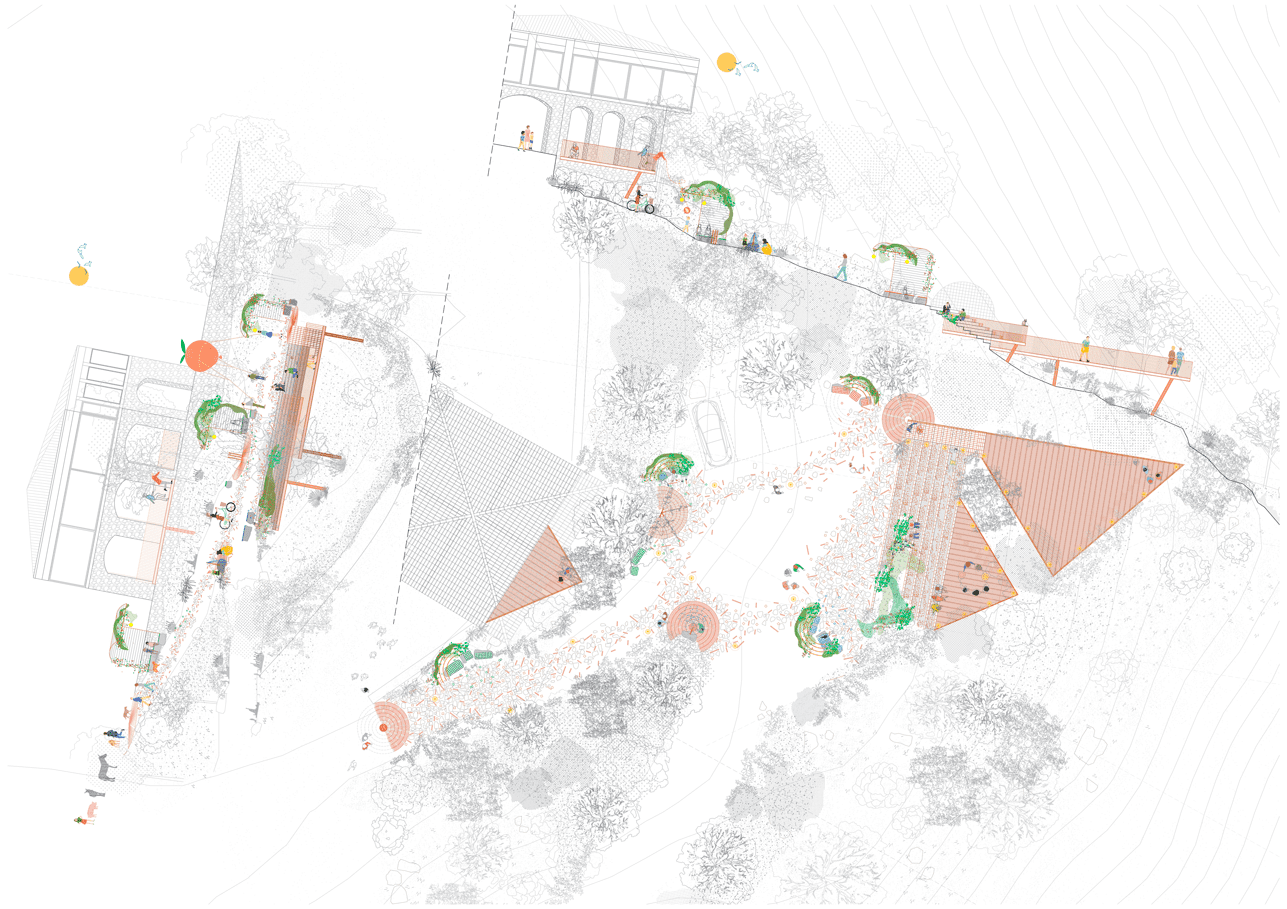
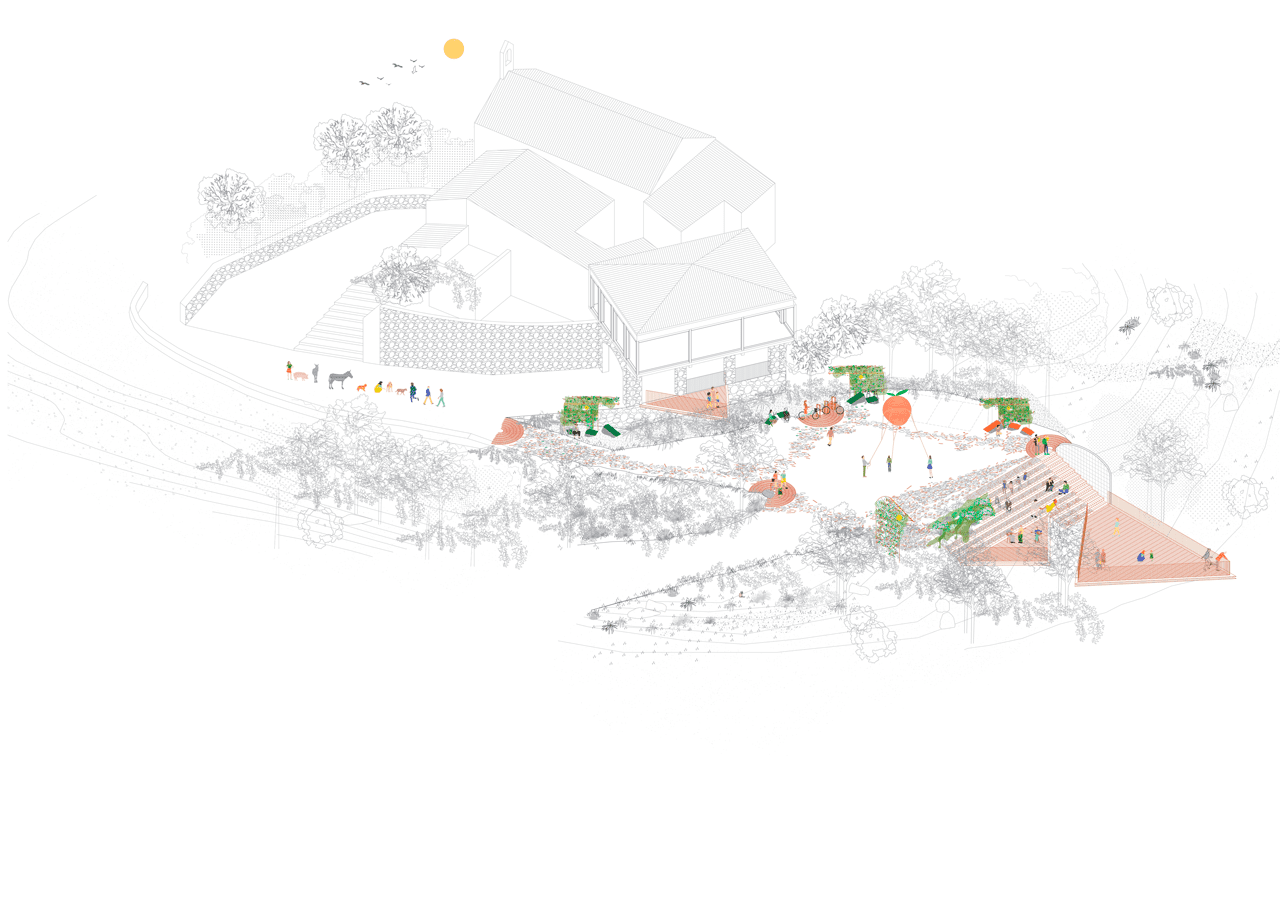
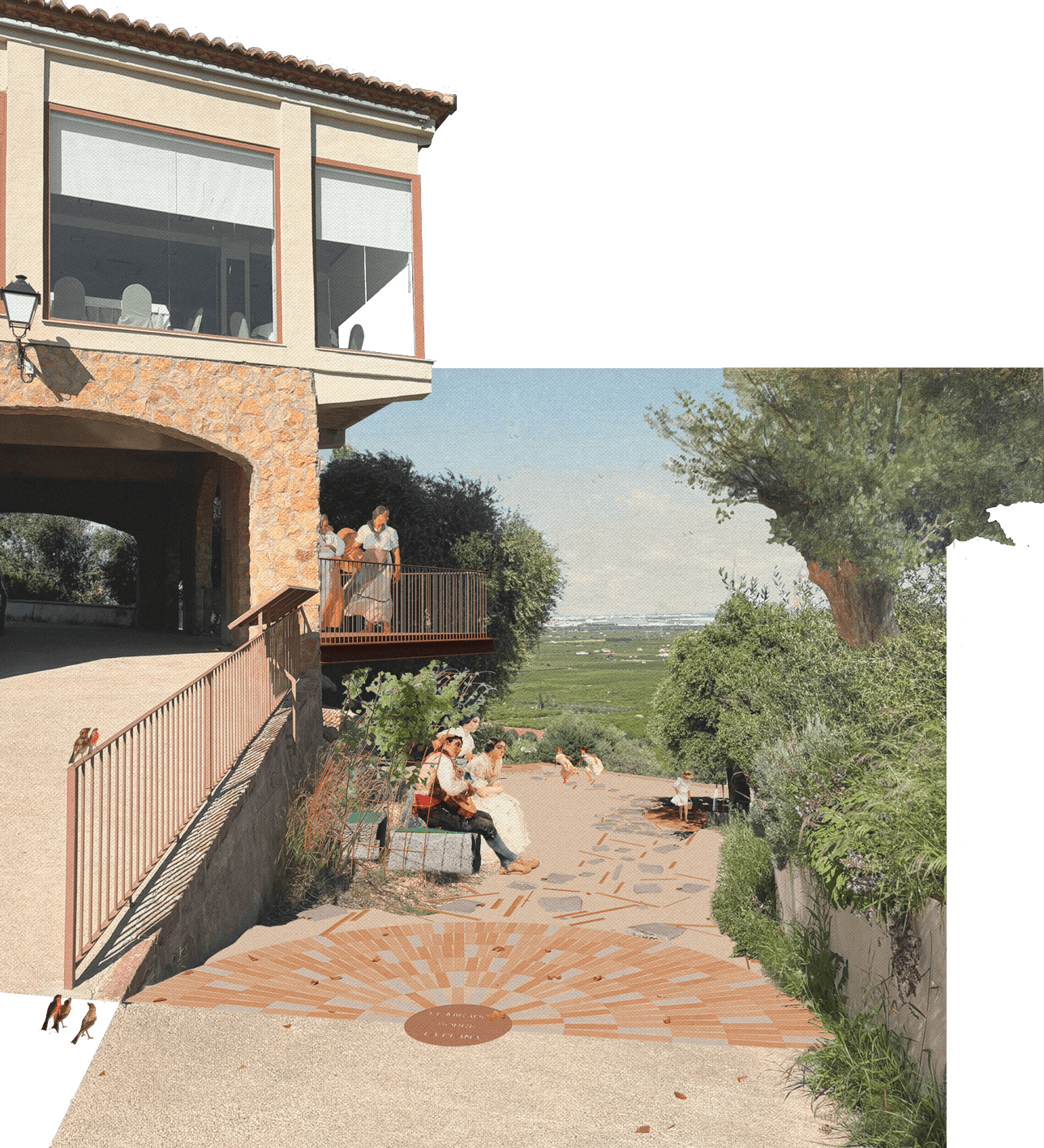
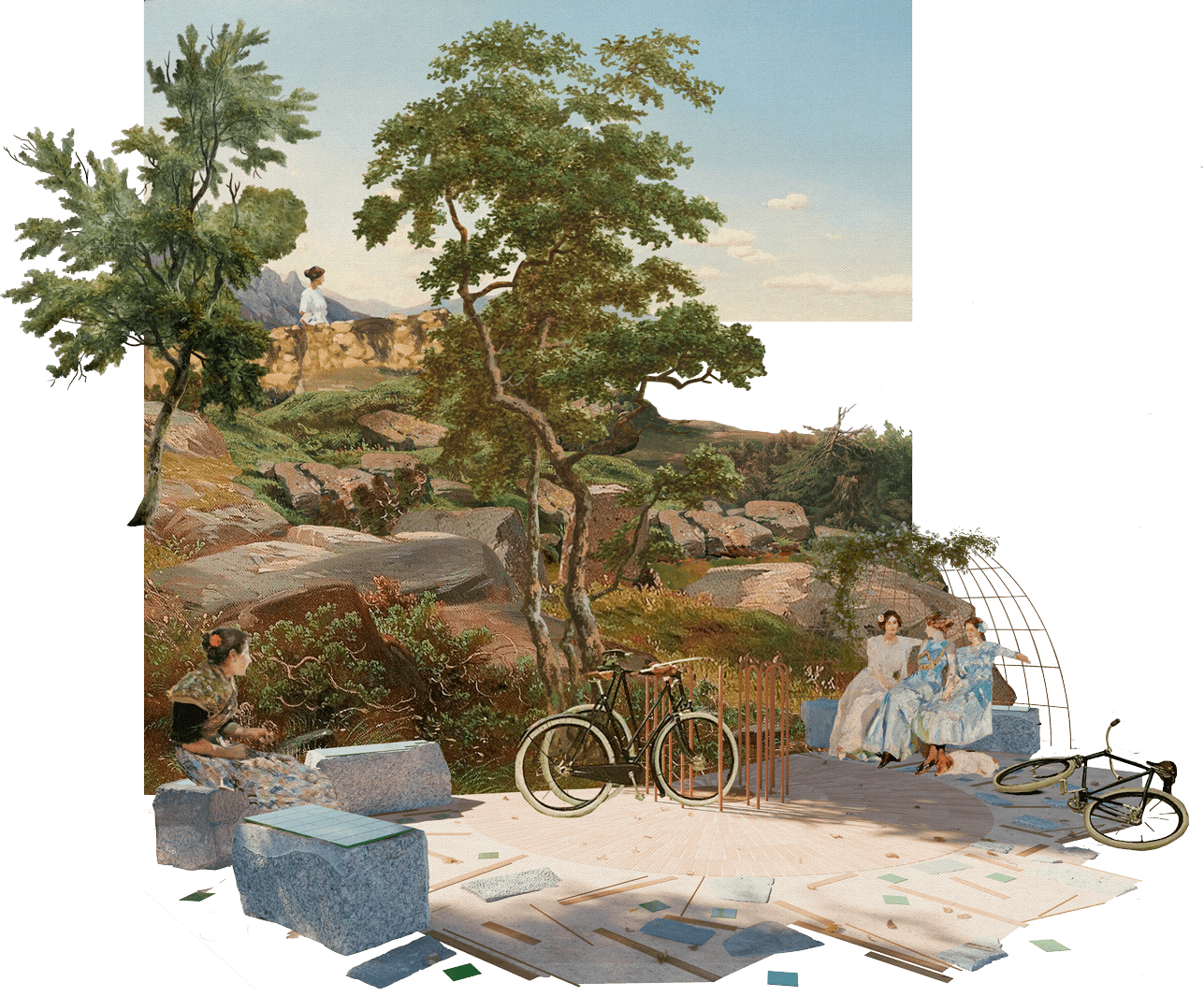
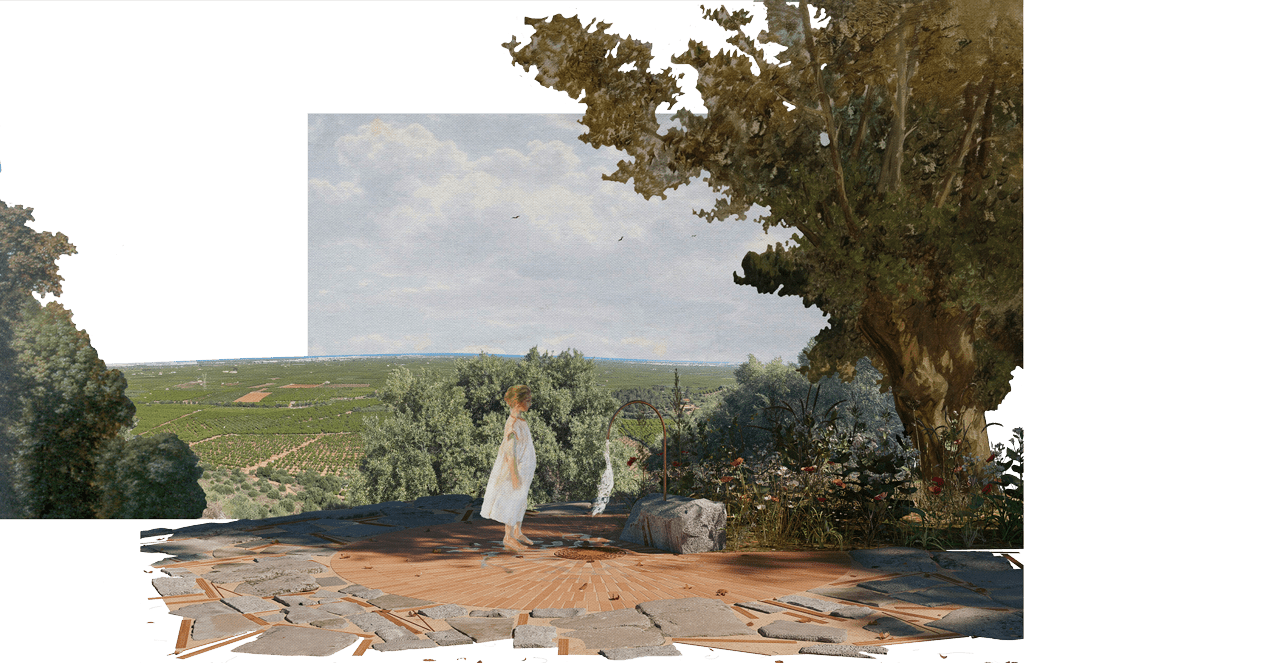
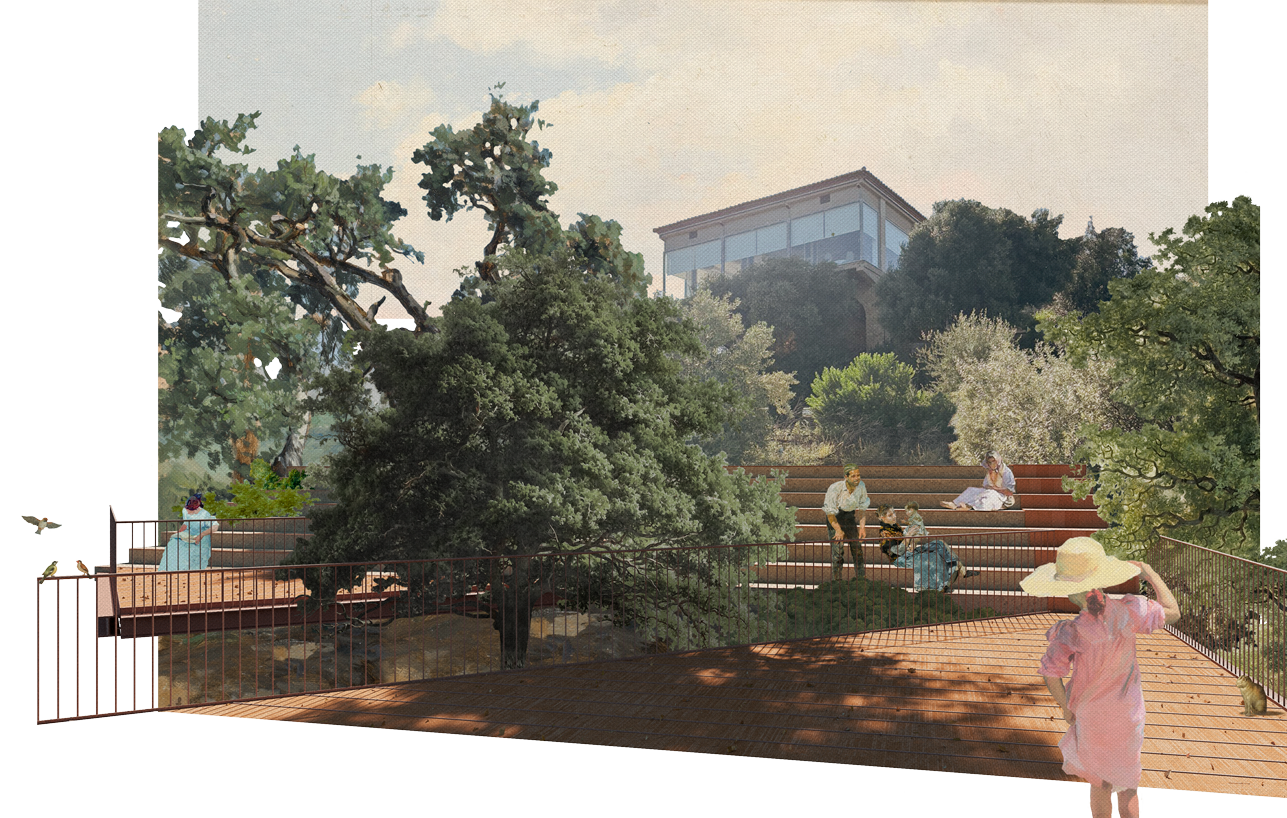
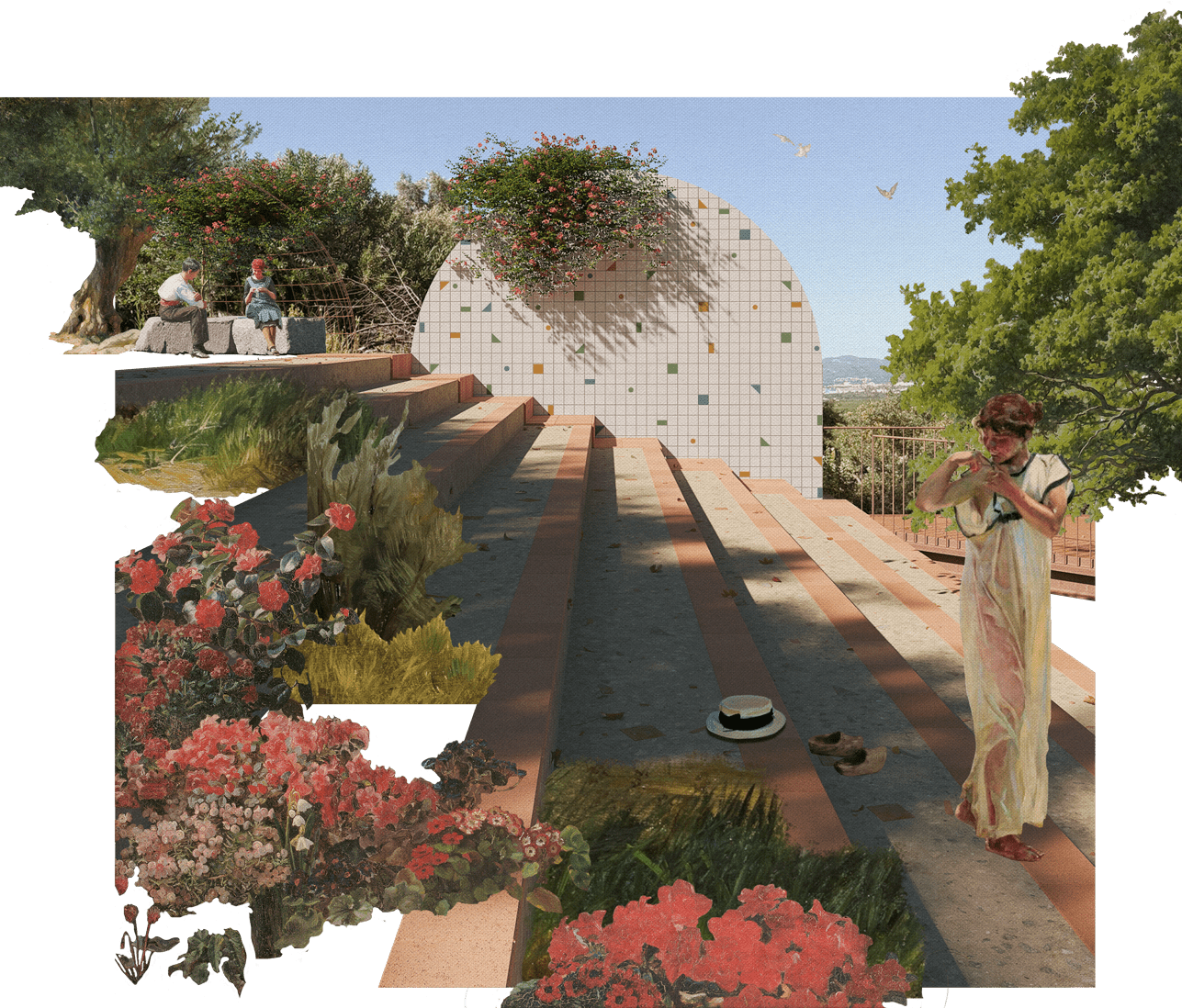
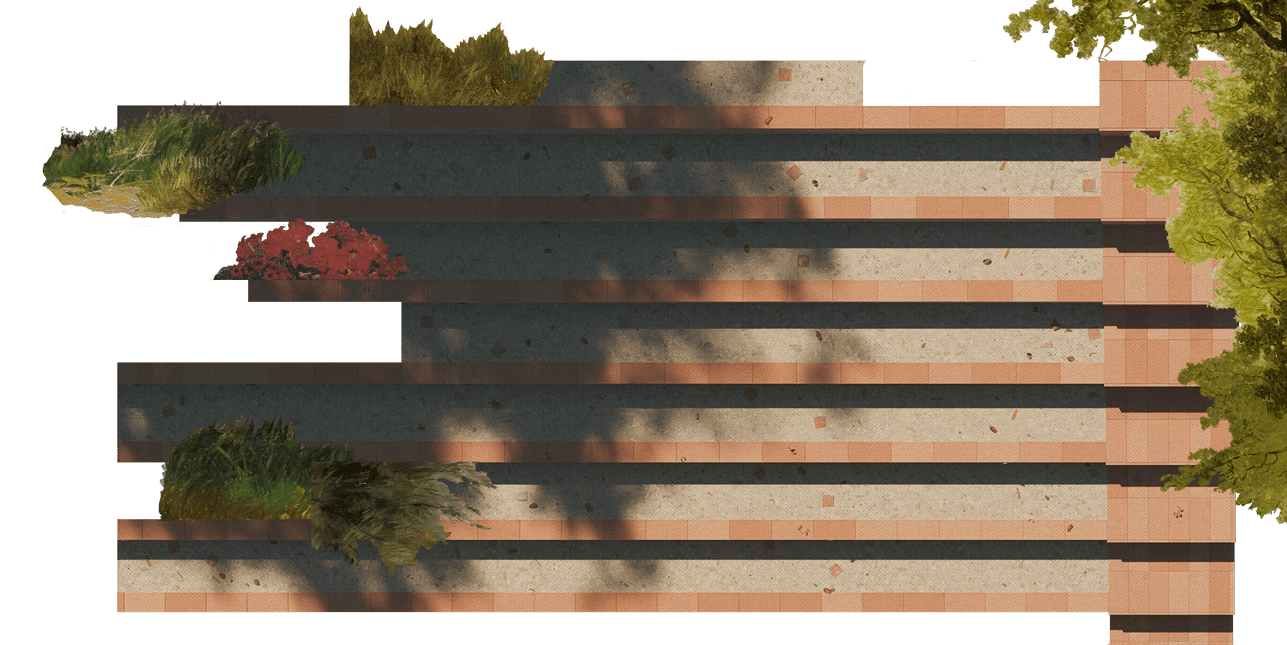

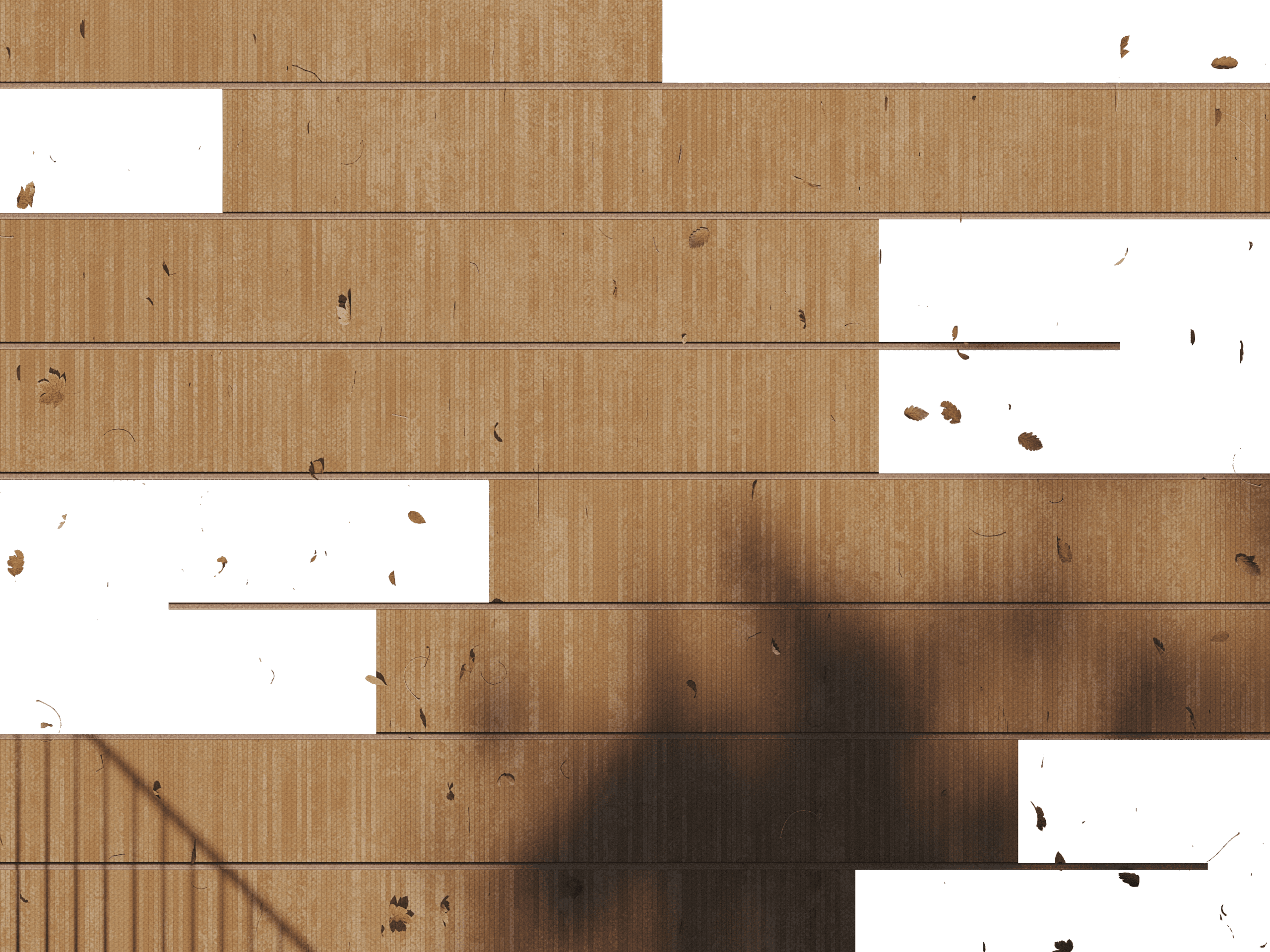
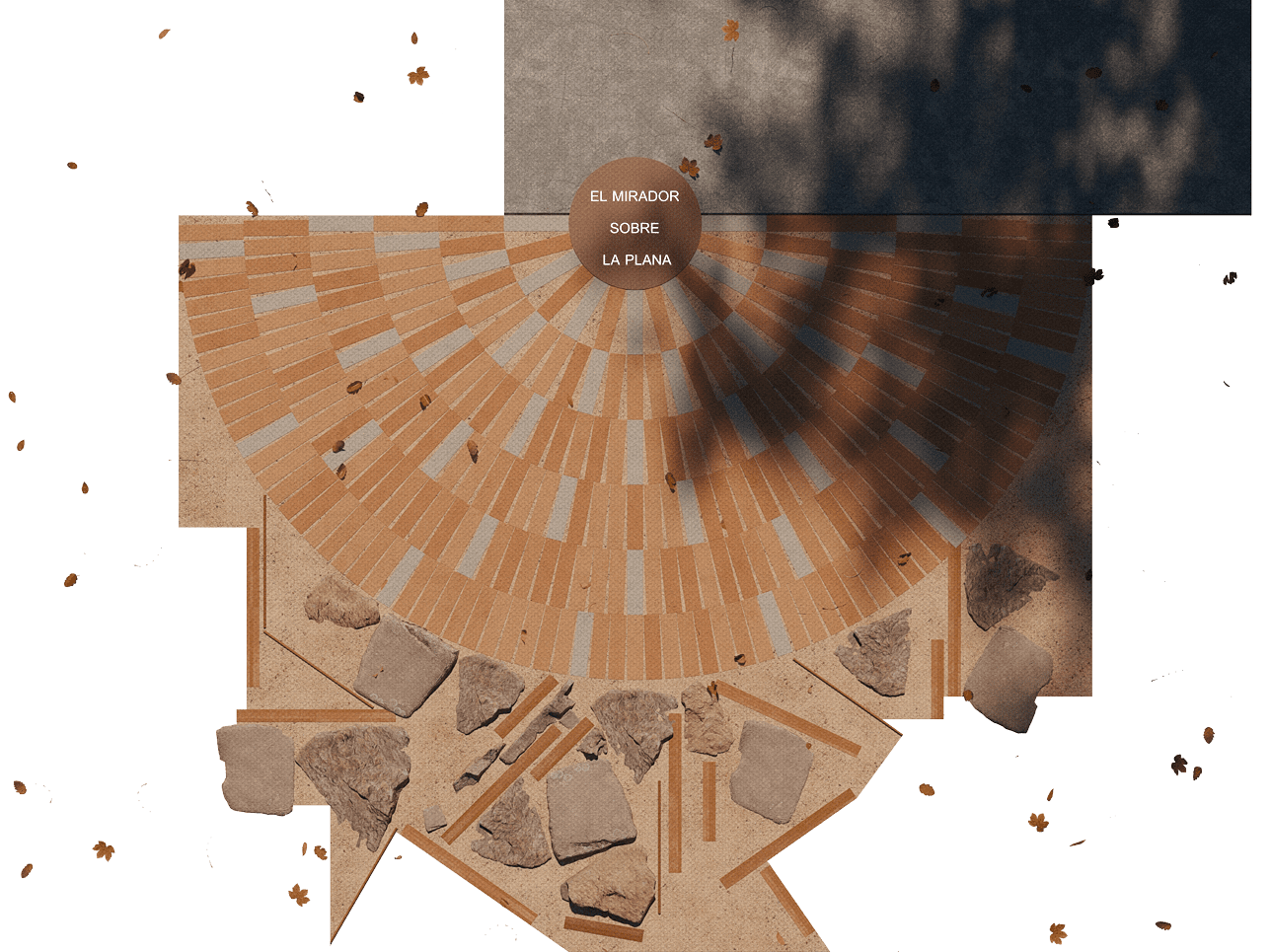

Romeria de tot l’any
Realized together withMha Arquitectura
Mention in the competition CRU from Diputació de Castelló
We start the route leaving the car at the base of the mountain, beginning a quiet walk towards the hermitage of Sant Antoni, in Betxí. We are surrounded by birdsong, the gentle movement of the pine trees and, after the rains, a landscape full of flowers and vegetation. We cross paths with some hikers as we advance at a slow pace, captivated by the surroundings. When we reach the top, we can see the bell tower and we imagine the day of Sant Antoni, January 17, when a pilgrimage full of Bechineneses fills this path to the hermitage to share a meal with a view.
Above all, the wind makes itself felt. Leaving the hermitage behind, the path descends and reveals a spectacular view of the Castelló plain. You pass an esplanade with natural steps that seem to blend into the landscape. We sit down to enjoy the surroundings and approach an old building in ruins which, as an improvised viewpoint, gives us the best views of the day: Alquerías del Niño Perdido, Burriana, Mascarell, Nules, Montgó, La Vilavella and the sea in the background. This point becomes the inspiration to think about an intervention that improves the place, but without losing its essence.
Thus was born a proposal based on respect for the place and based on three materials already present: stone, ceramics and steel. To this is added a fourth intangible element: the passage of time. The proposal aims to blend in with the landscape, to be sustainable and realistic, enhancing the values of the place.
We return to the path with the proposal already imagined. A ceramic semicircle marks the beginning of the route and acts as a transition between the old pavement and the new one, made of compacted earth with fragments of ceramic and stone. From this point, several elements can be glimpsed: viewpoints, benches, fountains and stands. The first stops are made up of stone benches, with touches of colourful ceramics. Descending, a viewpoint accessible to people with reduced mobility appears, taking advantage of the restaurant’s porch. Further down, a small fountain marks another point of interest with ceramic geometry.
The esplanade is extended with new benches, and at its edge, the ceramic and vegetation-covered steps descend towards the landscape. A ceramic staircase connects with two new triangular viewpoints, minimally anchored to the ground, which again point out the view towards the plain.
The proposal aims to improve the route and the experience of the place, making it more accessible and visually richer. A permeable pavement of compacted earth is proposed, integrating ceramic fragments and local stones. This collage adapts to the needs of the route: it is concentrated at key points and disappears near the vegetation. Shaded areas, views and water points are marked with circular ceramic geometries.
The existing stands are rehabilitated with lime concrete, reusing materials from the nearby ruin. The edges are adapted: at one end they merge with nature, allowing plant colonisation; at the other, they are transformed into a ceramic scale that connects with the viewpoints.
Three viewpoints are installed with clear intentions: the first one under the restaurant, accessible to everyone; the other two, below, among olive trees, are made of steel and dry-laid ceramics. These, with marked geometric shapes but integrated materials, are intended to be part of the landscape and not an extraneous element.
The project seeks to be absolutely respectful of the natural and heritage context. Located next to an Asset of Local Relevance such as the Sant Antoni hermitage, local materials and filtering paving have been chosen to minimise the environmental and visual impact. The ceramic remains of nearby factories are reused to create the cladding and paths.
The project was designed to be local, local and sustainable: that it could be built by local workers, using simple techniques and everyday materials, but with great attention to detail. The ceramic material chosen is from a local company, Exagres, and is combined with pieces from Drainker to create the ceramic mosaic of the route. This reduces costs and carbon footprint.
The artistic aspect has also been considered: a hand-painted ceramic mural by a local artist, created in collaboration with artisans, is proposed for the viewpoint, creating a unique and representative piece of the BRL and the history of Betxí. This mural would be located on the descent to the viewpoints, reinforcing the emotional and cultural link with the place.
The proposal is called ‘Romeria de tot l’any’, because it aims to transfer the spirit of that 17th January to the rest of the year. The path becomes a living and inclusive space, open to hikers, families, cyclists and artists. A place to rest, observe, drink, play and perform. A space for everyone.
All in all, the project does not transform the place, but rather emphasises its goodness. It adds elements that enrich without disfiguring. Subtle railings, ceramic benches, water points, stairs and viewpoints that honour the landscape. A sensitively thought-out intervention, which treats users as adults and reminds us that this place belongs to all Bechinans and to everyone who appreciates natural and cultural heritage.

